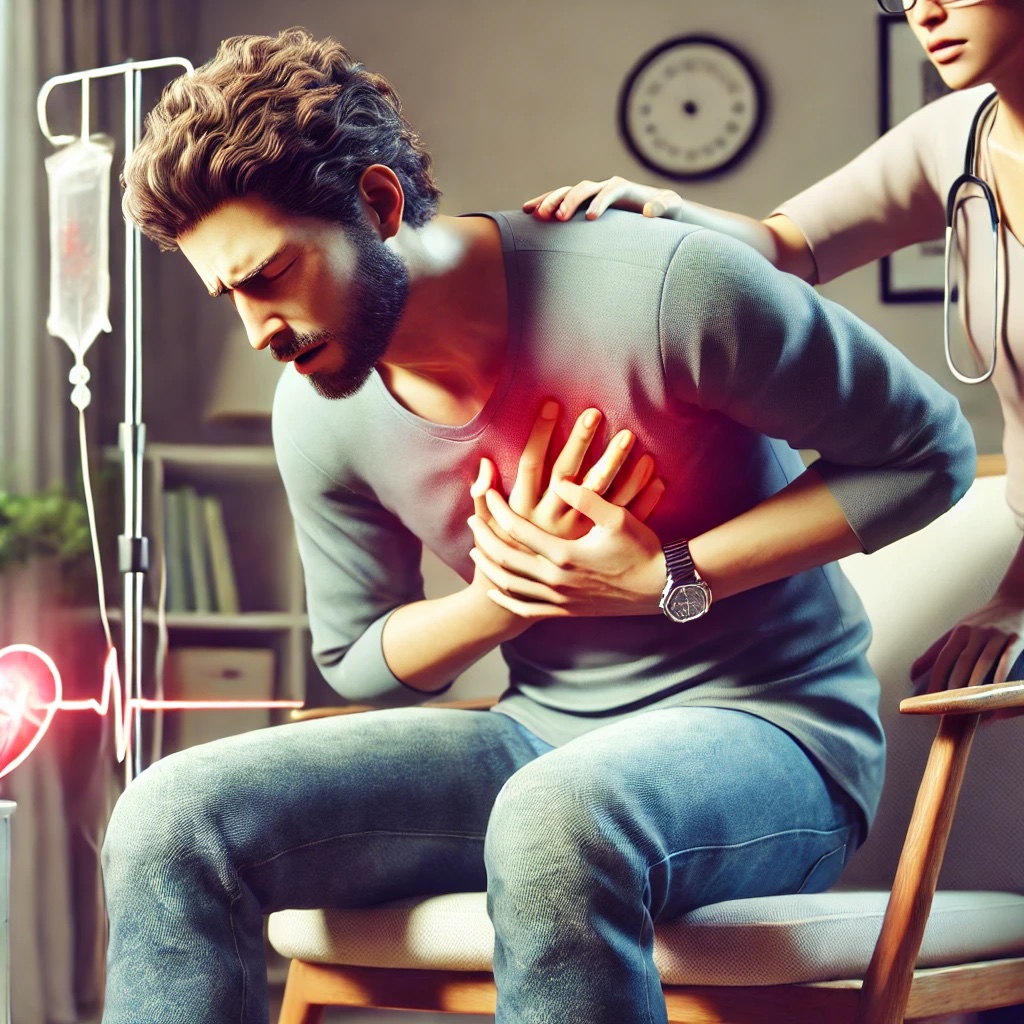In the Emergency Room
Chest pain can be frightening and should never be ignored. Understanding the emergency causes of chest pain can help you act quickly. There are three major emergency causes of chest pain:
- acute coronary syndromes
- pulmonary embolism, and
- Aortic dissection.
Acute coronary syndromes (ACS) involve reduced blood flow to the heart. This can lead to a heart attack. Symptoms include chest pain or discomfort. The pain may spread to the shoulders, arms, neck, or jaw. Shortness of breath, sweating, and nausea may also occur.
Pulmonary embolism (PE) happens when a blood clot blocks an artery in the lungs. This can cause sudden, sharp chest pain. This can be worse when breathing deeply or coughing. Other symptoms include shortness of breath, rapid heart rate, and lightheadedness.
Aortic dissection is a tear in the inner layer of the aorta. The Aorta is the large blood vessel branching off the heart. This causes severe, sharp chest pain that can feel like tearing or ripping. The pain might move to the back, abdomen, or legs. It is a life-threatening condition that requires immediate attention.
Diagnostic Tests for Chest Pain
When you visit the emergency room with chest pain, doctors will perform various tests to identify the cause. An electrocardiogram (ECG) is one of the first tests. It measures the electrical activity of your heart and helps detect heart attacks and other heart problems.
Blood tests are also crucial. They can show markers of heart damage, like troponin levels. High troponin levels indicate a heart attack. Doctors might also check for D-dimer levels, which can suggest the presence of a blood clot.
A chest X-ray shows your heart, lungs, and blood vessels. It can help identify lung problems, including pneumonia, and show the size and shape of your heart.
A computed tomography (CT) scan might be needed. These detailed images help detect conditions like pulmonary embolism and aortic dissection. A CT angiography can provide even more detailed images of blood vessels.
Echocardiography uses sound waves to create moving images of the heart. This test helps evaluate heart function and detect heart valve and chamber problems.
In Summary

Understanding the potential causes of chest pain and the tests, doctors use help you act quickly and get the care you need. If you experience severe chest pain, seek immediate medical attention. Early diagnosis and treatment can save lives.
Copyright © 2025 William E. Franklin, DO, MBA
The information on this website (the “Site”) is for general informational purposes only. It is not a substitute for professional medical advice, diagnosis, or treatment. This disclaimer governs your use of the Site; by accessing and using the Site, you accept and agree to be bound by this disclaimer. If you disagree with this disclaimer, you should not use the Site.
No Medical Advice:
The content provided on the Site, including but not limited to text, graphics, images, videos, and other materials, is designed to offer general health and wellness information. It does not intend to provide medical advice about your condition or concerns. Always seek the advice of a qualified healthcare professional with any questions you may have regarding a medical condition. Never disregard professional medical advice or delay seeking it because of something you have read on this Site.
No Doctor-Patient Relationship:
Using this Site and transmitting information does not create a doctor-patient relationship between you and the Site’s owners, operators, or contributors. No recipient of information from this Site should act or refrain from acting based on any content included without seeking appropriate medical advice from a licensed professional.
Use at Your Discretion:
The Site is provided “as is,” and your use is at your own risk. While we strive to provide accurate and up-to-date information, we make no representations or warranties of any kind, express or implied, about the completeness, accuracy, reliability, suitability, or availability of the Site or the information, products, services, or related graphics contained on the Site for any purpose.
Third-Party Content and Links:
The Site may contain links to third-party websites or resources. These links are provided for your convenience and do not imply endorsement or recommendation of these third parties’ information, products, or services. We have no control over the content of linked sites. We are not responsible for any information, services, or products these sites provide. You access and use such third-party sites at your own risk.
Consult a Healthcare Professional:
If you have specific medical questions or concerns or require medical advice or treatment, please consult a qualified healthcare professional promptly. Never disregard professional medical advice or delay seeking it because of something you have read on this Site.
In summary, the information provided on this Site should not be considered medical advice and does not create a doctor-patient relationship. Your use of the Site is at your discretion, and you should always consult a qualified healthcare professional for personalized medical advice and treatment.
